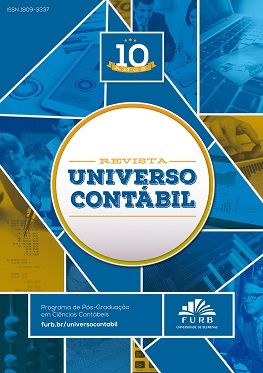DIVERSIFICATION WITH THE OPTION-TO-ABANDON: AN INTEGRATED VALUATION MODEL
DOI:
https://doi.org/10.4270/ruc.20151105-135Palabras clave:
Asset Pricing, Bankruptcy, Limited Liability, OPM, Option Pricing, Systematic Risk.Resumen
A model that recognizes the possibility of total shareholder loss in the aftermath of bankruptcy reveals simultaneously the stock price effects of diversification and of the option to abandon assets to creditors. In essence the model integrates security pricing behavior predicted by the CAPM and by the OPM in a single formula. Results have implications for the valuation of equity and debt securities of firms in distress and of options when underlying cash flows are correlated with the market. The analysis suggests why models that consider only diversification or the option-to-abandon sometimes fail to track the behavior of actual returns.
Descargas
Citas
BAKSHI, G.; CAO, C.; CHEN, Z.. Empirical performance of alternative option pricing models. The Journal of Finance v. 52, n. 5, p. 2003-2049, 1998. http://dx.doi.org/10.1111/j.1540-6261.1997.tb02749.x
BHANDARI, L.C. Debt/equity ratio and expected common stock returns: empirical evidence. The Journal of Finance, v. 43, p. 507-528, 1988. http://dx.doi.org/10.1111/j.1540-6261.1988.tb03952.x
BLACK, F.; SCHOLES, M.S. The pricing of options and corporate liabilities. Journal of Political Economy, v.81, p. 637-654, 1973. http://dx.doi.org/10.1086/260062
BOWMAN, R.G. The theoretical relationship between systematic risk and financial (accounting) variables. The Journal of Finance, v.34, p. 617-630, 1979. http://dx.doi.org/10.1111/j.1540-6261.1979.tb02129.x
BODIE, Z.; KANE, A.; MARCUS, A.J. Investments. 2nd edition, Irwin, Homewood, IL, 1993.
BREALEY, R.A.; MYERS, S.C.; ALLEN, F. Principles of Corporate Finance. 8th edition, McGraw-Hill Irwin, New York, 2006.
CHAN, K.C.; CHEN, N. Structural and return characteristics of small and large firms. The Journal of Finance, v.46, n. 4, p. 1467-1484, 1991. http://dx.doi.org/10.1111/j.1540-6261.1991.tb04626.x
DENNIS, P.; MAYHEW, S. Risk-neutral skewness: evidence from stock options. The Journal of Financial and Quantitative Analysis, v. 37, n. 3, p. 471-493, 2002. http://dx.doi.org/10.2307/3594989
DICHEV, I.D. Is the risk of bankruptcy a systematic risk? The Journal of Finance, v. 53, p. 1131-1147, 1998. http://dx.doi.org/10.1111/0022-1082.00046
DUAN, J.; WEI, J. Is systematic risk priced in options? Rotman School of Management Working Paper No. 06-05, 2006. Available at SSRN: http://ssrn.com/abstract=902122
DYBVIG, P.H.; INGERSOLL, J.E. Mean-variance theory in complete markets. The Journal of Business, v.55, n. 2, p. 233-251, 1982. http://dx.doi.org/10.1086/296162
FAMA, E.F.; FRENCH, K.R. Common risk factors in the returns on stocks and bonds. Journal of Financial Economics, v. 33, p. 3-56, 1993. http://dx.doi.org/10.1016/0304-405X(93)90023-5
FAMA, E.F.; FRENCH, K.R. Multifactor explanations of asset pricing anomalies. The Journal of Finance, v. 51, p. 55-84, 1996. http://dx.doi.org/10.1111/j.1540-6261.1996.tb05202.x
GRINBLATT, M.; TITMAN, S. A study of monthly mutual fund returns and performance evaluation techniques. The Journal of Financial and Quantitative Analysis, v. 29, n. 3, p. 419-444, 1994. http://dx.doi.org/10.2307/2331338
HALEY, C.W.; SCHALL, L.D. The Theory of Financial Decisions. McGraw-Hill, New York, 1979.
HANSON, S.D.; LADD, W. Robustness of the mean-variance model with truncated probability distributions. American Journal of Agricultural Economics, v.73, n. 2, p. 436-445, 1991. http://dx.doi.org/10.2307/1242728
HELWEGE, J.; KLEINMAN, P. Understanding aggregate default rates of high yield bonds. The Journal of Fixed Income June, 1997.
HILLEGEIST, S.A.; KEATING, E.K.; CRAM, D.P.; LUNDSTEDT, K.G. Assessing the probability of bankruptcy. Review of Accounting Studies, v.9, n. 1, p. 5-34, 2004. http://dx.doi.org/10.1023/B:RAST.0000013627.90884.b7
MANDELKER, G.N.; RHEE, S.G. The impact of the degrees of operating and financial leverage on systematic risk of common stock. The Journal of Financial and Quantitative Analysis, v. 19, p. 45-57, 1984. http://dx.doi.org/10.2307/2331000
MOODY’S INVESTORS SERVICE. Historical default rates of corporate bond issuers, 1920-1999. Moody’s Special Comment, January, 2000.
MOSSIN, J. Theory of Financial Markets, Prentice-Hall, Englewood Cliffs, 1973.
MUTHÉN, B. Moments of the censored and truncated bivariate normal distribution. British Journal of Mathematical and Statistical Psychology, v. 43, p. 131-143, 1990. http://dx.doi.org/10.1111/j.2044-8317.1990.tb00930.x
SHUMWAY, T. The delisting bias in CRSP data. The Journal of Finance, v. 52, p. 327-340, 1997. http://dx.doi.org/10.1111/j.1540-6261.1997.tb03818.x
SHUMWAY, T. Forecasting bankruptcy more accurately: a simple hazard model. The Journal of Business, v.74, p. 101-124, 2001. http://dx.doi.org/10.1086/209665
VASSALOU, M.; XING, Y. Default risk in stock returns. The Journal of Finance. v.59, n. 2, p. 831-868, 2004. http://dx.doi.org/10.1111/j.1540-6261.2004.00650.x
Descargas
Publicado
Cómo citar
Número
Sección
Licencia
Los derechos de autor de los artículos publicados en esta revista son del autor, y los derechos de primera publicación son de la revista. Por aparecer en esta revista de acceso público los artículos son de uso gratuito, con atribuciones específicas, en aplicaciones educativas y no comerciales. La revista permitirá el uso de trabajos publicados con fines no comerciales, incluso el derecho a enviar el trabajo a bases de datos de acceso público.


